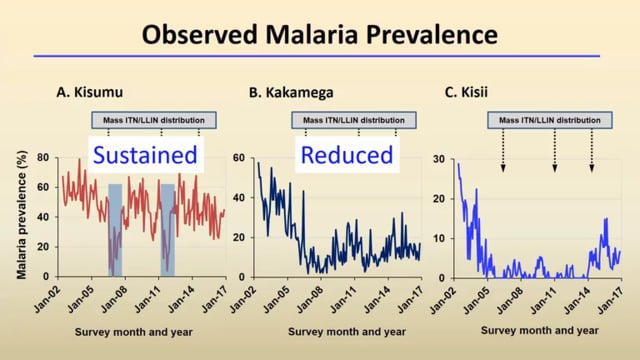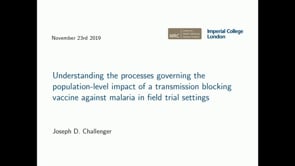ASTMH 2017, Guofa Zhou: “Malaria transmission at three sentinel sites in western Kenya from 2002 to 2016: the resurgence and causality analysis”
Collaborator(s): University of California Irvine (UCI), United States
Countries: Kenya
Published: 09/11/2017
In collaboration with ASTMH, Image Audiovisuals, and session presenters, MESA brings you this webcast from the 66th ASTMH annual meeting in Baltimore, November 2017
Title: “Malaria transmission at three sentinel sites in western Kenya from 2002 to 2016: the resurgence and causality analysis”
Speaker: Guofa Zhou, University of California, Irvine
Session information:
Symposium 0175: “Malaria: Mosquito Transmission and Interruption”
Thursday, 9 November, 8:00 – 9:45 AM, Convention Center – Ballroom II (Level 400)
Abstract:
The long-lasting insecticidal nets (LLINs), indoor residual spraying of insecticide (IRS) and artemisinin-based combination therapy (ACT) have been scaled up in Africa to control and eliminate malaria in the past decade. These intervention measures have led to overall significant declines in malaria burden. However, several studies have also documented little change in some sites in Africa. High-quality evidence for malaria burden changes and especially the mechanisms underlying these changes are often lacking. We conducted a long-term evaluation of malaria transmission dynamics in three sentinel sites with varying transmission intensity in western Kenya. The 15-year longitudinal monthly observational study found that in two highland sites, currently indoor resting vector density has resurged to the level of 2004-2005, the period before the LLIN mass distribution. Parasite prevalence remained unchanged at two sites since 2009 and bounced back to the level of 2005 at one site. We investigated the potential causes of the resurgence, including LLIN coverage rate, vector insecticide resistance, vector species composition shift, insecticidal decay effect of the LLINs, and climatic anomaly. Generalized additive model was used to determine the relative contributions of different factors through a stepwise feeding procedure. The results indicated that indoor resting Anopheles gambiae s.l. density was mainly affected by long-term trend and annual variability of climate regardless of study sites, whereas density and proportion of indoor resting An. funestus were correlated with resistance level and climatic factors. Parasite prevalence were strongly correlated with insecticide resistance, An. funestus indoor resting density, LLIN killing ability and climatic factors. The results suggested that insecticide resistance and shift of vector species became key factors affecting malaria control in this highly endemic area of Africa.
THEMES: Measurement of Transmission | Vector Control


